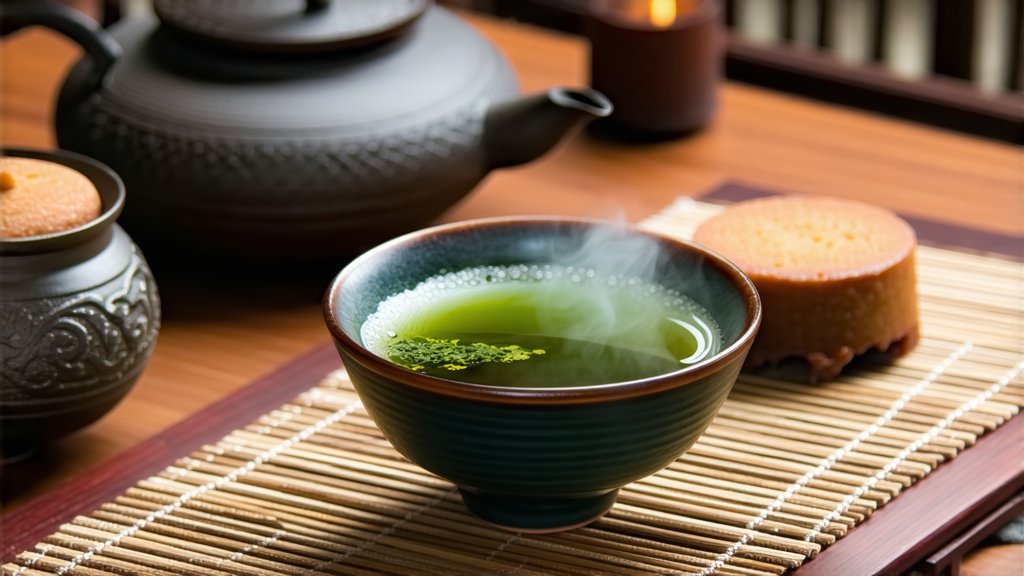
In the vast expanse of China's rich tea heritage, one variety stands out not only for its unique flavor profile but also for its deep historical roots and intricate production process—Pu-erh tea. This fermented tea, hailing from the Yunnan Province, has been a cornerstone of Chinese tea culture for centuries, revered for its potential health benefits and complex taste that matures gracefully over time. As we embark on this exploration of Pu-erh tea, we delve into its storied past, diverse types, meticulous crafting techniques, and the art of tasting that distinguishes it among connoisseurs worldwide.
A Glimpse into History
The origins of Pu-erh tea trace back over a thousand years to the ancient tea-horse trade routes in southwestern China. Its name is derived from the city of Pu'er in Yunnan Province, which became a hub for tea trading during the Tang Dynasty (618-907 AD). Initially, Pu-erh was a form of sun-dried green tea until the post-fermentation process was discovered, transforming it into the dark, earthy beverage we know today. This transformation was largely accidental, attributed to the humid climate of Yunnan and long storage times during transportation, which facilitated natural fermentation.
Varieties of Pu-erh Tea
Pu-erh tea is broadly categorized into two main types: raw (Sheng) and ripe (Shou), each offering distinct characteristics and aging potential.
-
Raw Pu-erh (Sheng): Made from sun-dried Camellia sinensis leaves, Sheng Pu-erh undergoes minimal processing and is known for its bright, astringent flavor when young. However, with proper storage, it gradually ages and mellows, developing deeper, more complex flavors over time.
-
Ripe Pu-erh (Shou): Invented in the 1970s to mimic the aging process of Sheng Pu-erh more quickly, Shou Pu-erh undergoes a controlled fermentation process using a "wet piling" method. This accelerates the development of its characteristically smooth, earthy taste with a reddish-brown hue, making it suitable for immediate consumption.
The Art of Crafting Pu-erh Tea
The production of Pu-erh tea is a testament to the skill and tradition passed down through generations. Here's an overview of the key steps involved:
-
Picking: Only the top two leaves and a bud are selected during the picking process, ensuring the highest quality.
-
Withering: Freshly picked leaves are spread out to wilt under the sun, reducing moisture content and softening the leaves.
-
Fixation: Also known as killing green, this step involves brief high-temperature heating to halt enzymatic activity and preserve the leaves' green color.
-
Rolling: Leaves are rolled into tight spiral shapes, enhancing their appearance and facilitating even drying.
-
Fermentation (for Raw Pu-erh): After rolling, the leaves are left to age naturally, exposed to air and humidity, allowing microbial action to slowly ferment them over years or even decades.
-
Wet Piling (for Ripe Pu-erh): Invented as a modern shortcut to mimic aging, this process involves piling the leaves in a controlled environment where they are regularly turned and monitored for temperature and humidity to achieve rapid fermentation within weeks or months.
-
Drying: Once fermented to the desired level, the tea is dried again to remove excess moisture and stabilize its flavor.
-
Compressing: Traditionally, Pu-erh tea is pressed into various shapes such as cakes, bricks, or tuochas (nestled cakes), using steam heat to soften the leaves before compression. This not only aids in storage and transport but also contributes to the tea's unique aging properties.
The Art of Tasting Pu-erh Tea
Tasting Pu-erh tea is an experience that engages all senses, from sight to smell to taste and feel. Here's how to appreciate it fully:
-
Observation: Begin by examining the dry leaves and their shape, then observe the color and clarity of the brewed liquor.
-
Aroma: Inhale deeply both the dry leaves and the wet leaves after rinsing to detect subtle notes of sweetness, earthiness, or floral hints.
-
Taste: Take small sips, allowing the tea to coat your palate, focusing on its initial taste, mid-mouth feel, and aftertaste. Note any changes in flavor as the tea opens up with subsequent infusions.
-
Mouthfeel: Pay attention to the texture and body of the tea, whether it feels silky, thick, or astringent.
-
Aftertaste: Savor the lingering flavors after swallowing, assessing its length and complexity.
Pu-erh tea offers a sensory journey that evolves with each sip and with time, reflecting the wisdom of Chinese tea masters who have perfected this art form over millennia. Whether you're a seasoned tea drinker or new to the world of teas, exploring Pu-erh opens doors to understanding not just a beverage but a profound cultural legacy.